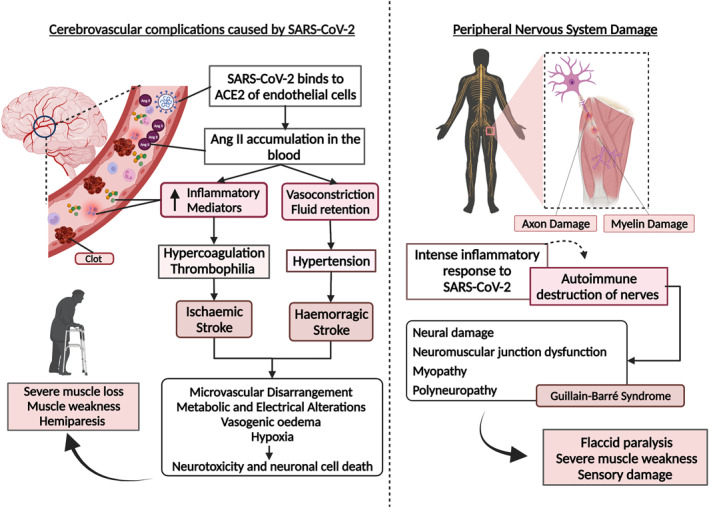FIGURE 2.

Cerebrovascular complications and neural damage caused by SARS‐CoV‐2 infection and its inflammatory response. Cerebrovascular complications caused by SARS‐CoV‐2: the virus binds to angiotensin‐converting enzyme 2 (ACE2) of endothelial cells, depleting these receptors and increasing the levels of angiotensin II (Ang II) in the blood. Elevated Ang II levels result in inflammation, leading to clot formation and potential ischaemic stroke, vasoconstriction, and fluid retention, with increased blood pressure and potential haemorrhagic stroke. In both events, the consequences include microvascular disarray, hypoxia, metabolic and electrical changes, and vasogenic oedema, leading to neurotoxicity and cell death. The sequelae of cerebrovascular events involve severe muscle wasting, muscle weakness, and hemiparesis. Peripheral nervous system damage: the intense inflammatory response resulting from a viral infection can induce nerve destruction via an autoimmune response, characterised by damage to the axons and myelin sheath. As a result, dysfunction in the neuromuscular junction, myopathies, and polyneuropathies can occur, such as Guillain‐Barré syndrome, generating flaccid paralysis with severe loss of muscle mass and sensory damage. This figure was created with Biorender.com
